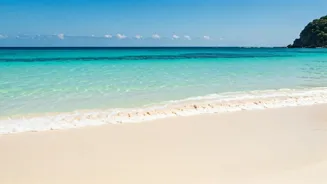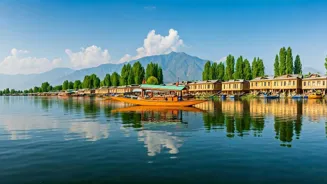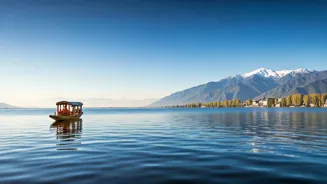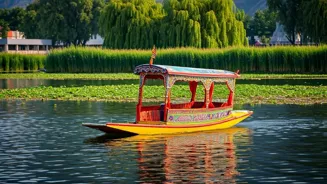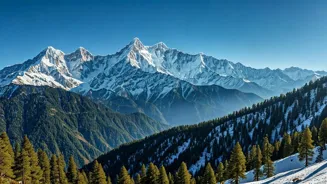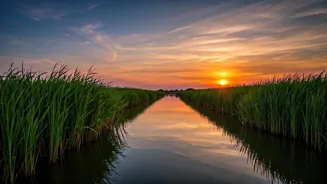A Scenic Overview
Dal Lake, often described as the 'Jewel in the Crown of Kashmir,' is a picturesque urban lake located in Srinagar. It is characterized by its serene waters
and the surrounding majestic mountains. The lake is divided into various basins including, Gagribal, Lokut Dal, Bod Dal, and Nagin, each adding to its diverse beauty. The lake's location is surrounded by a ring of mountains on all sides, creating a unique microclimate. This geography contributes significantly to its ecosystem and is a major reason for its attraction. The distinctive features of the lake include the colorful shikaras (gondola-like boats) and the floating gardens (locally known as 'Rad') which attract tourists and locals alike. The lake's historical significance adds to its allure, making it a cultural site for the locals and a beautiful place to visit.
Houseboats and Shikaras
The houseboats and shikaras on Dal Lake are iconic symbols of Kashmiri culture and hospitality. Houseboats offer a unique lodging experience, providing a glimpse into a traditional lifestyle while allowing for comfortable stays. These houseboats, often ornately decorated, provide travelers with a distinctive perspective of the lake's environment. Shikaras, the small wooden boats, are the primary means of transport within the lake and are used by both locals and tourists. They are used for everything from commuting and transporting goods to offering sightseeing tours and are often operated by local boatmen. The vendors on shikaras offer a variety of goods, including fresh produce, handicrafts, and souvenirs, thus providing a unique shopping experience. They create a vibrant commercial ecosystem. The serene experience of a shikara ride is enhanced by the scenic beauty surrounding the lake and is a must-do for every visitor. The traditional designs of both the houseboats and shikaras further enhance the overall experience.
Floating Gardens 'Rad'
A unique feature of Dal Lake is the floating gardens, called 'Rad'. These gardens are essentially cultivated on the water, creating a floating ecosystem. The 'Rad' is constructed by interlacing aquatic vegetation and soil, providing a platform for growing vegetables, flowers, and fruits. These gardens not only add to the aesthetic beauty of the lake but also contribute to the local economy and food production. The cultivation on 'Rad' is a traditional practice that has been followed for generations, reflecting the ingenuity of the local people. The produce from these gardens is supplied to local markets, playing a vital role in the food chain. The sight of these floating gardens is a picturesque one, adding a unique charm to the landscape and offering a glimpse into the sustainable practices of the local communities. They are important elements in the cultural and economic landscape of Dal Lake.
Cultural Significance
Dal Lake holds deep cultural significance in the Kashmir Valley. It is much more than just a scenic destination; it’s a place that reflects the traditions and lifestyles of the people. Many cultural festivals and events take place around the lake, highlighting the local customs and traditions. The lake is closely associated with the livelihoods of many people, providing sustenance through fishing and agriculture. The intricate houseboat culture is also a key aspect of the region’s heritage, preserving traditional art forms and crafts. The peaceful existence on the lake reflects a way of life that has persisted for centuries. It is a popular backdrop for films and other creative works. Dal Lake has also been a source of inspiration for poets and artists over centuries, adding a layer of creative importance to the region. The lake continues to be a place of cultural continuity, thus connecting the people to their heritage.
Environmental Challenges
Despite its beauty, Dal Lake is facing environmental challenges. Pollution from sewage, industrial waste, and tourism is a significant issue. Excessive weed growth and siltation are slowly shrinking the size of the lake and impacting its water quality. The changing climate also contributes to these problems, affecting the overall ecosystem. Conservation efforts are underway to tackle these issues. The government and local organizations have initiated cleaning drives, waste management programs, and efforts to control weed growth. There are also initiatives to raise awareness among the public about environmental preservation and sustainable tourism. The future health of the lake depends on the continued efforts of both the authorities and the local people. Addressing pollution and implementing sustainable practices are important steps in safeguarding this natural beauty for the coming generations.
Conservation Efforts
Various conservation efforts are in progress to save Dal Lake. These include comprehensive cleaning operations aimed at removing waste and debris from the lake bed and its shores. There are regular programs to remove weeds, which are detrimental to the lake's ecological balance. Waste management systems have been developed to reduce the input of pollutants, promoting responsible waste disposal and recycling. The government also promotes sustainable tourism, which means developing practices to minimize the environmental footprint of tourism activities. Community engagement programs are underway to educate locals and visitors about the importance of conserving the lake. The combined efforts of government agencies, local communities, and environmental organizations are necessary to revitalize the lake. These initiatives are vital for preserving the natural splendor of Dal Lake and maintaining its ecological equilibrium for future generations.


